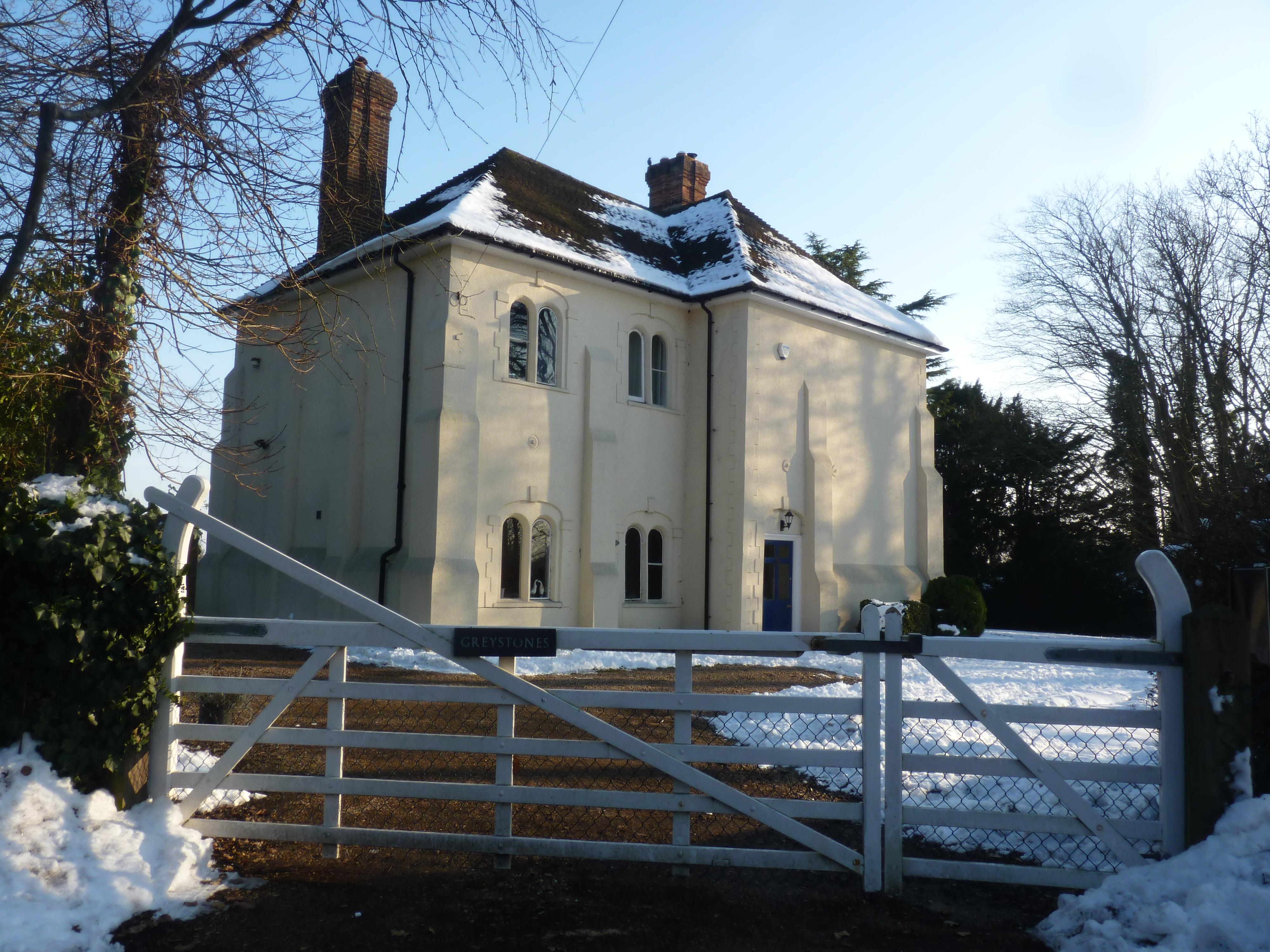
|

| The Monk of Greystones and The Lady of Rose Court |
Pluckley
Uncovered |
||
| Greystones ‘Greystones’ is a large house on Station Road, Pluckley, built in 1863. It is typical of the local style, a solid building with ‘Dering’ windows. Sir Edward Dering (1st Baronet (1598-1644)) is believed to have escaped from the Roundheads through a narrow, curved-topped window at Surrenden Dering manor - a popular myth that led to the addition of 'Dering windows' to most, if not all, of the houses owned by the Dering family during the romantic Victorian era. It was originally called 'Rectory Cottage' (home of the curate for St
Nicholas's Church), and was renamed ‘Greystones’ in 1924.
As a document of 1572 states that Pluckley Rectory was 'in a low, unhealthy
place, a great distance from the church’, it is likely that the
rectory prior to this was nearer the area of the train station a further
mile down the road. |
 Greystones |
||
| Rose Court ‘Rose Court’ is a Grade 2 listed, early C19th, building nearby, shown on the 1871 OS map as ‘Rose Cottage’. Not much else is known about this residence, which also displays the ‘Dering’ windows so popular with the Victorians. |
 Rose Court |
||
| The Story | |||
Greystones is said to be haunted by the shade
of a reclusive cleric - the house’s former owner who is more often
referred to as ‘The Monk’. Residents of Greystones as far
back as 1954, and up to present day have denied encountering any paranormal
activity there, however local legend suggests he is connected to the phantom
lady supposedly haunting Rose Court. |
|||
| The Sightings | |||
Although we have been unable to find any reported instances of the Tudor
Lady being seen, apparently locals report that her voice is often heard
summoning her dogs as she walks between the two homes. No ‘locals’
are identified however, and local historian Jackie Grebby was unable to
shed any further light on who they may be for us. Conveniently, it is
said that she has not been heard for many years. |
|||
| Exploring the Possibilties | |||
There are absolutely no facts underpinning either of these
two stories. In fact there doesn't even appear to be any witnesses.
|
|||
| Conclusions | |||
It would therefore be logical to propose that these stories came into being around the time that Desmond Carrington, who once lived in Pluckley, admitted to "concocting a whole string of them" for an article featured in the TV times written by journalist Bill Evans in the 1950's. Or perhaps when Pluckley's ghosts first appeared in print in 1955 when Frederick Sanders wrote "Pluckley Was My Playground", where the Gypsy woman and Highwayman were mentioned. With such shaky, conflicting, or plain non-existent evidence, we are
left with little choice but to conclude that these two ghosts are a product
of the C20th rumour mill, made up to bolster the numbers of Pluckley's
ghostly inhabitants. |
|||
| Source | |||
| Greystones image - Patrick
Noble Ghost Connections Rose Court image - http://www.midnight-fire.net/shadows/pluckleytales.html |
|||
|
©2004/2020 Ghost Connections UK |